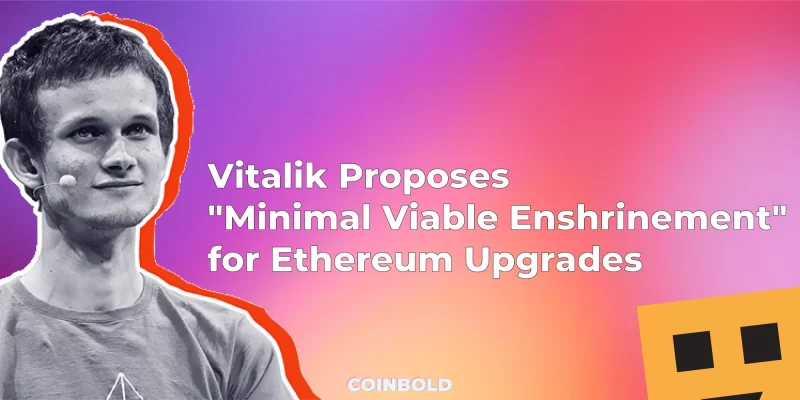Vitalik Buterin, co-founder of Ethereum, has put forth a new methodology called “minimal viable enshrinement” for carefully adding features and upgrades to the Ethereum blockchain.
Speaking at a recent event, Buterin argued for keeping Ethereum improvement proposals simple and avoiding over-engineering new rules or complexities into the core protocol.
“We should have a bias towards building very simple and minimal systems,” Buterin stated, invoking the Unix philosophy of simple software design. “overly complex ‘enshrinement’ is dangerous.”
Keeping Ethereum Evolution Measured
According to Buterin, his proposed minimal viable enshrinement approach involves enacting focused upgrades one step at a time, rather than drastic shifts.
This serves to keep Ethereum backward-compatible and technically consolidated as changes stack up overtime. Buterin pointed out that Ethereum clients today still run code from over 5 years ago.
By incrementally “enshrining” select improvements into the blockchain without overhauling underlying components, Ethereum can become more resilient and adaptable, both technically and socially.
Preventing Centralization and Bloat
A key motivation behind minimal viable enshrinement is preventing community knowledge and participation from becoming too fragmented. Buterin argues that modularizing every Ethereum feature into separate layers or domains risks centralizing power and decision-making into specialized groups.
Keeping a consolidated Ethereum core with carefully considered incremental additions retains knowledge sharing and coordination among the entire community of node operators, developers, users, and other stakeholders.
The approach also avoids technical bloat on Ethereum itself. Buterin notes periodic removal of seldom-used features may be warranted to streamline the protocol and ensure smoother upgrades.
Optimizing ZK-EVM Operations
In particular, Buterin highlighted ZK-EVMs (zero-knowledge Ethereum virtual machines) as one area where targeted enshrinement could help. ZK-EVMs allow computation on Ethereum without revealing private data.
Rather than impose strict standards upfront for all ZK-EVM operations, Buterin suggests initially allowing a wide flexibility of ZK schemes, while enshrining specific verification helper functions to make development easier.
By taking this minimal route focused on functionality over regulation, ZK-EVMs and other innovations can flourish organically on Ethereum without over-engineering unnecessary constraints prematurely.
As Ethereum moves towards its ambitious roadmap like the Serenity overhaul, Buterin’s concept of minimal viable enshrinement offers wisdom: err on the side of incrementalism and simplicity when cementing changes into the blockchain. With this prudent ethos guiding Ethereum’s evolution, its decentralized growth and innovation can continue scaling new heights sustainably.


